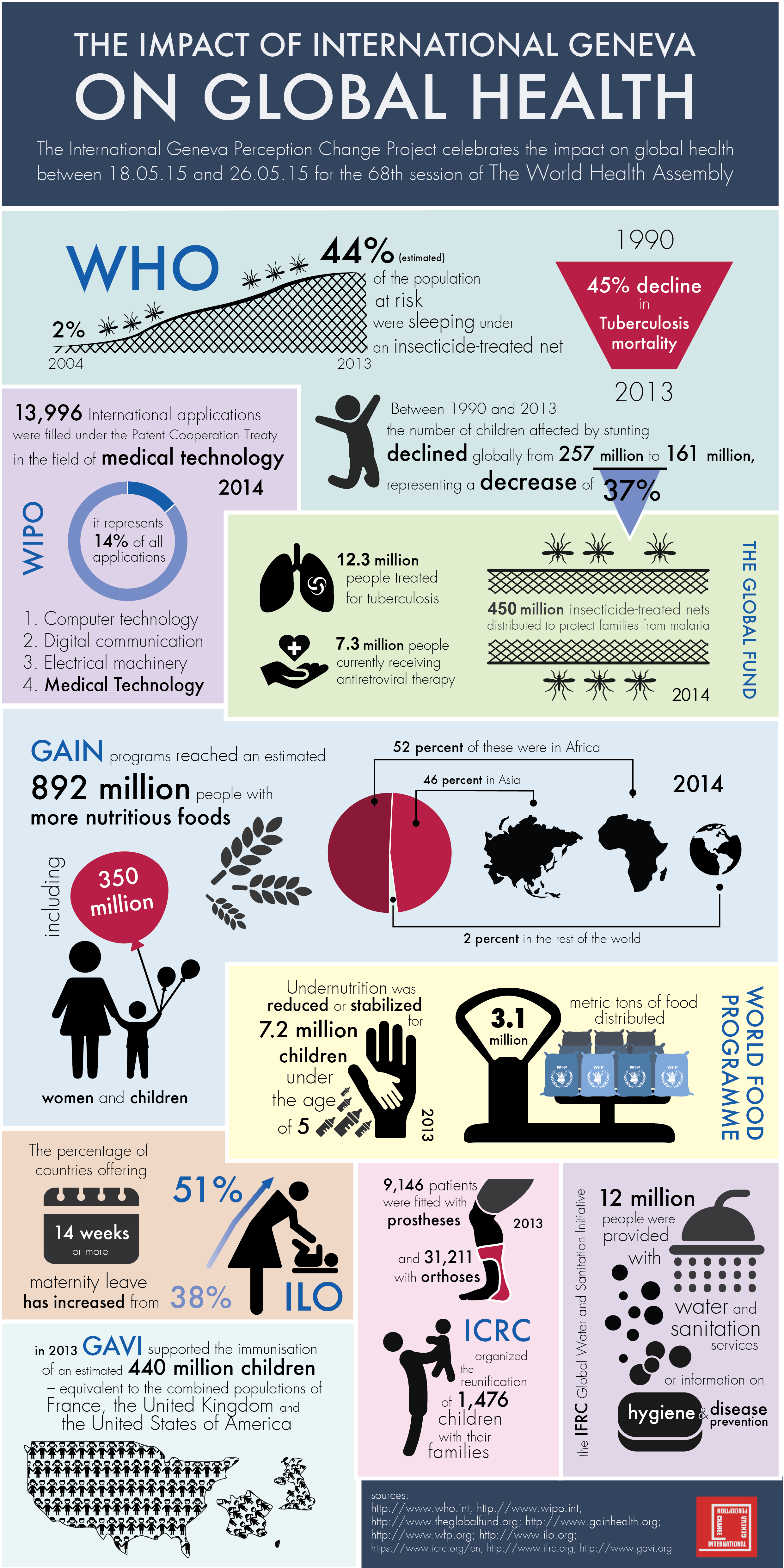Looking Ahead for Global Health
Half of the world's population is at risk of malaria. The World Health Organization (WHO) estimates that around 198 million people contract malaria, and that over half a million die every year. If we take a step back and digest these numbers, we are looking at over 1,000 people dying every day, most of them children. In fact, the WHO says that every minute a child dies from malaria. How is this acceptable?
It's not. And the world is not indifferent to this global health risk. In Geneva we have the leading organizations that are operating at the global level to change this stark reality. The World Health Organization; UNICEF; the Global Fund to Fight AIDS, Tuberculosis and Malaria; the Medicines for Malaria Venture; and Roll Back Malaria are some of the Geneva-based organizations and partnerships that focus on this deadly disease. At the same time, they form part of a broader global public health cluster that operates across Geneva serving the world. (See the infographic below.)
Between the year 2000 and 2013, the mortality rate of malaria dropped nearly by 50 percent. The collective measures for prevention and treatment are making a tangible difference. This radical reduction in mortality is a testament to how the international public health system can have direct impact by saving lives.
Still, many people remain at risk, and we can do better. Leaders in the health sector are well aware of this and have collectively committed to up their game. This week the World Health Assembly agreed on a new global malaria strategy that aims to reduce the disease by at least 90 percent and eliminate malaria altogether in in at least 35 countries by 2030. Malaria can be prevented and treated, but more resources are needed. The Global Fund estimates that USD$5.1 billion are needed every year, but only half of that is made available. This is an ambitious target. Let's make sure we don't let 3.2 billion people down.

source: http://www.huffingtonpost.com/

